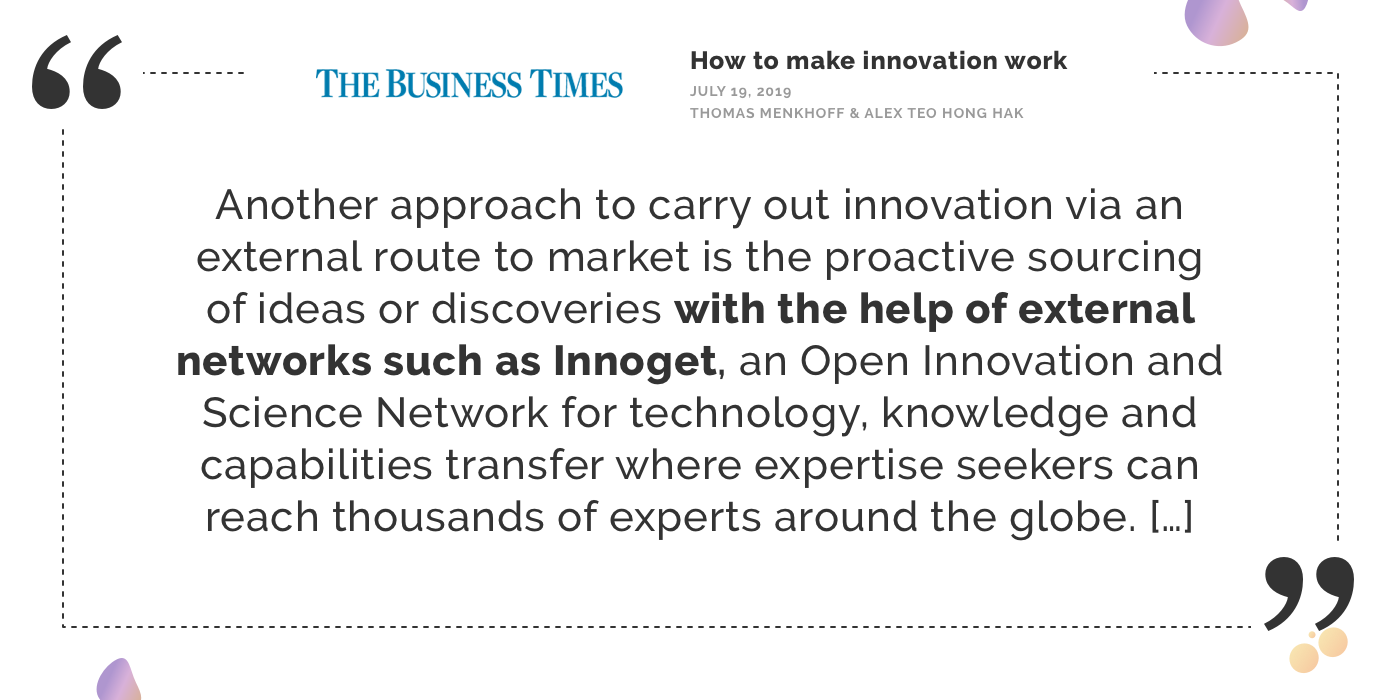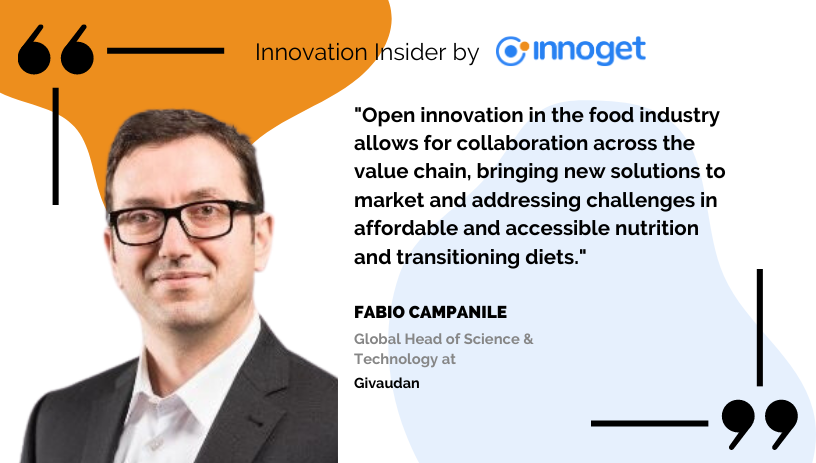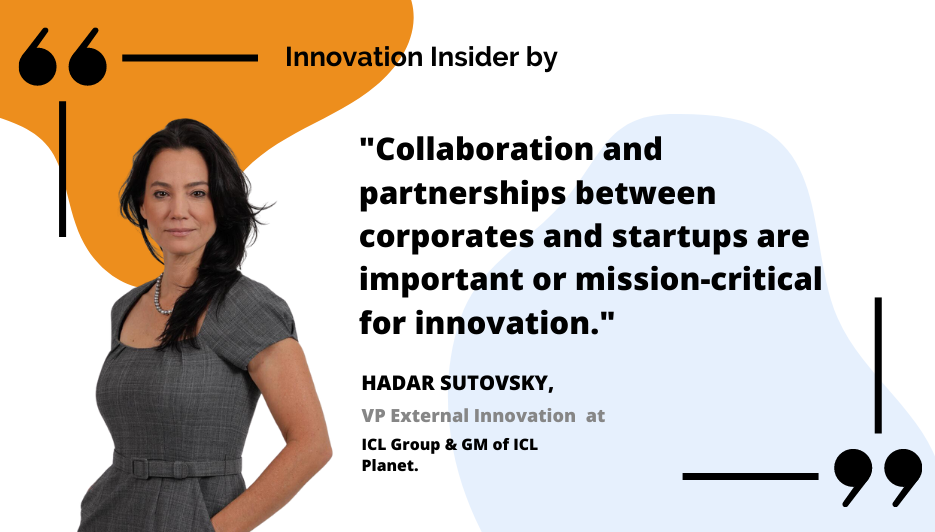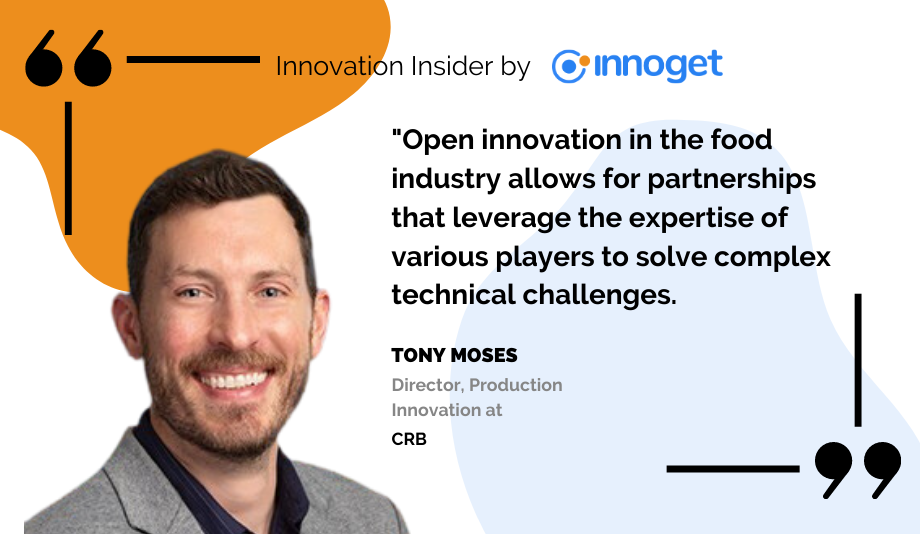---
This article was originally published on July 19, 2019 by Prof. Thomas Menkhoff and Alex Teo Hong Hak, both from the Singapore Management University, at the online daily businesstimes.com.sg. The article has been replicated on Innoget's Innovation Blog by Innoget's Editorial Staff for information purposes.
---
How to make innovation work
Establish a programme, corporate venture fund or an open innovation ecosystem that empowers those who dare to be different.
Ask any business leader what keeps her or him awake at night, and you will hear answers ranging from concerns about the risk of supply chain disruptions to difficulties coping with rising business costs. Chances are they will not say: "I need to improve the quality of our innovation processes." While phrases and challenges such as "blockchain-powered platform models" or "disruptive innovation" are discussed by many small and medium-sized enterprise (SME) leaders, terms such as "innovation value chain" or "phase-gate model" arguably have not quite made it into their strategic vocabulary. That is a pity because well-managed innovation processes represent powerful lubricants to create and capture new value.
According to management gurus Morten T Hansen and Julian Birkinshaw, typical innovation management challenges in "idea-poor organisations" include insufficient promotion of internal or externally-sourced ideas while "conversion-poor organisations" fail to screen or develop ideas properly - often resulting in the insufficient monetisation of sound ideas. In many organisations, tight budgets, risk-averse thinking and formal bureaucratic procedures grind execution to a halt. Attempts to build a culture of innovation often amount to little more than innovation theatre, despite top management's best intentions.

Such challenges can be tackled by implementing (or enhancing existing) innovation processes. The word "process" refers to a series of steps taken in order to achieve a particular end. In our context, it is to reach strategic innovation goals in a timely manner such as incremental improvements in core products and services or truly transformational innovations. Trying to make innovation work with the same old planning, budgeting and review approaches usually does not do the job. Instead, adding explorative flexibility to planning and control systems by creating a new emerging business unit and providing special funds for unexpected innovation opportunities can help to drive innovation more effectively.
Innovation processes represent a core component of Enterprise Singapore's Business Excellence Niche Standard for Innovation (besides customers, leadership, strategy, people, knowledge and results). Examples of "excellence indicators" include (i) the existence of a systematic process to acquire, evaluate and implement ideas that create value; (ii) improvements made to the innovation and design processes to shorten cycle time, improve design quality and reduce costs; or (iii) involving both internal and external stakeholders in the process of innovating and inventing new products, services and solutions such as staff, customers, trading partners, suppliers and distributors.
To create an idea-rich organisation, business leaders can initiate open innovation and/or crowdsourcing processes, leveraging on both internal and external sources for ideas and resources. A corporate example is The UBS Future of Finance Challenge which targets startups and established, growing companies which are keen to change the way that finance works by deploying client-centric, transformative digital technologies. Competition winners are invited to participate in a proof-of-concept or pilot programme to further scale their ideas and technologies, with input and support by dedicated coaches and mentors.
Another interesting case is the Future Shapers initiative of Oxfam, an international confederation of development non-governmental organisations (NGOs). Powered by Crowdicity's idea management software platform, the initiative helped to engage Oxfam's globally dispersed people in a collaborative conversation about organisational change issues.
External sources for ideas and resources may involve non-customers, the general public or a third-party organisation such as a licensee who may develop internally generated ideas and discoveries into marketable products or services. Another approach to carry out innovation via an external route to market is the proactive sourcing of ideas or discoveries with the help of external networks such as Innoget, an Open Innovation and Science Network for technology, knowledge and capabilities transfer where expertise seekers can reach thousands of experts around the globe.
One of Innoget's users is Nivea manufacturer Beiersdorf, which collaborates with external innovation partners from industries and the scientific community as part of its research and development (R&D) work. Imagine this scenario: your own salaried scientists need external help in developing a new skincare line for men above the age of 85. This is where the Innoget network kicks in by linking product innovation scouts with dermatology scientists, say in Japan, which is experiencing a fast-ageing society. Subsequently, further skincare-related development efforts may take place internally using the company's own resources.
Good innovation process management can help to create a conversion-rich organisation in which ideas are developed properly. One approach is to implement an effective screening process, eg on the basis of the so-called Stage-Gate approach, an innovation project management technique that divides the innovation initiative such as a product development process or process improvement into different phases or stages separated by decision points. During these control points or gates, the state of a particular project phase is reviewed and approved (or not). The key review purpose is to share project status information, discuss and resolve problems as well as review planned performance, cost and risks within a product or process (eg with the help of FMEA, a highly structured tool for failure analysis used in Six Sigma).
Information about how local firms have implemented such stage-gate processes can be obtained by studying the reports of Enterprise Singapore's Innovation Excellence Award winners such as Sheng Siong. Core steps of the firm's innovation process entail ideation, project planning, implementation and measurement of results. An outcome of a completed innovation project is Sheng Siong's hybrid self-checkout counter system with a cash management system which has significantly benefitted its business operations.
In many organisations, greenlighting an idea is riddled with problems such as flawed selection criteria (often decided by the most senior persons and/or a committee, and not actual customer behaviour), lack of funds to pursue ideas further or disgruntled employees who do not know why their ideas were not supported. Pumping innovation ideas and staff suggestions into a dreadful organisational culture will not work.
Lego's open innovation ecosystem exemplifies the power of good innovation processes. Lego fans can offer ideas to the Lego Ideas website by submitting pictures with self-explanatory descriptions. To convince decision-makers that the idea has merit, 10,000 supporters (votes) are required to kickstart the review process. This can be achieved by sharing ideas through Facebook or other social media. Once supporters are on board, the idea goes to the Lego review board which then decides whether it is good enough to advance to the next stage: turning it into an official set created by Lego (criteria include size, cost, part complexity, need for new parts, and licensing issues). While not all ideas are approved by the review board, chances are high that the winning idea will be turned into an official Lego product once the review board has given its go-ahead.
It is time to stop the innovation theatre and to achieve innovation process excellence aligned with strategy by enhancing the innovation value chain, eg by establishing an intrapreneurship programme, a corporate venture fund or an open innovation ecosystem that empowers those who dare to be different.
- The writers are from Singapore Management University (SMU).
Thomas Menkhoff is professor of organisational behaviour and human resources (education) at SMU's Lee Kong Chian School of Business.
Alex Teo Hong Hak is business improvement specialist at SMU's Office of Business Improvement.







